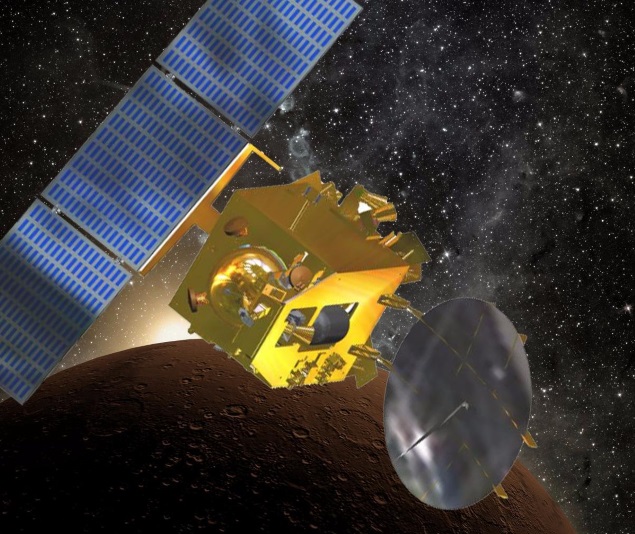- Home
- Science
- Science News
- New Mineral Evidence Hints at Ancient Microbial Martian Life: Researchers
New Mineral Evidence Hints at Ancient Microbial Martian Life: Researchers

A mineral that breaks down organic compounds when it is flash-heated has key implications for the Mars Curiosity Mission, scientists reported.
Jarosite is an iron sulphate and it is one of several minerals that Nasa's Curiosity Mission is searching for as its presence could indicate ancient habitable environments which may have once hosted life on the red planet.
On Earth, iron sulphate minerals like jarosite form in the harsh acidic waters flowing out of sulphur rich rocks.
Despite the adverse conditions, these waters are a habitat for bacteria that use these dissolved sulphate ions.
Their presence on the red planet provides evidence that acidic liquid water was present at the same time the minerals formed.
This could have provided an environment favourable for harbouring ancient microbial Martian life.
(Also See: Nasa Delays Spacewalk to Saturday to Analyze Spacesuit)
To reach this conclusion, researchers from Imperial College London and the Natural History Museum replicated a technique that one of Curiosity Rover's on-board instruments is using to analyse soil samples.
They tested a combination of jarosite and organic compounds.
The team discovered that the instrument's technique - which uses intense bursts of heat called flash-heating - broke down jarosite into sulphur dioxide and oxygen, with the oxygen then destroying the organic compounds, leaving no trace of it behind.
"The destructive properties of some iron sulphates and perchlorate to organic matter may explain why current and previous missions have so far offered no conclusive evidence of organic matter preserved on Mars' surface," said professor Mark Sephton from Imperial College London.
The next step will see the researchers using synthetic jarosite in their experiments which will enable a cleaner decomposition process to occur when the mineral is flash-heated.
This will allow for more precise quantitative measurements to be taken when the oxygen is being released.
The study was published in the journal Astrobiology.
Catch the latest from the Consumer Electronics Show on Gadgets 360, at our CES 2026 hub.
Related Stories
- Samsung Galaxy Unpacked 2025
- ChatGPT
- Redmi Note 14 Pro+
- iPhone 16
- Apple Vision Pro
- Oneplus 12
- OnePlus Nord CE 3 Lite 5G
- iPhone 13
- Xiaomi 14 Pro
- Oppo Find N3
- Tecno Spark Go (2023)
- Realme V30
- Best Phones Under 25000
- Samsung Galaxy S24 Series
- Cryptocurrency
- iQoo 12
- Samsung Galaxy S24 Ultra
- Giottus
- Samsung Galaxy Z Flip 5
- Apple 'Scary Fast'
- Housefull 5
- GoPro Hero 12 Black Review
- Invincible Season 2
- JioGlass
- HD Ready TV
- Laptop Under 50000
- Smartwatch Under 10000
- Latest Mobile Phones
- Compare Phones
- Honor Win RT
- Honor Win
- Xiaomi 17 Ultra Leica Edition
- Xiaomi 17 Ultra
- Huawei Nova 15
- Huawei Nova 15 Pro
- Huawei Nova 15 Ultra
- OnePlus 15R
- Asus ProArt P16
- MacBook Pro 14-inch (M5, 2025)
- OPPO Pad Air 5
- Huawei MatePad 11.5 (2026)
- Xiaomi Watch 5
- Huawei Watch 10th Anniversary Edition
- Acerpure Nitro Z Series 100-inch QLED TV
- Samsung 43 Inch LED Ultra HD (4K) Smart TV (UA43UE81AFULXL)
- Asus ROG Ally
- Nintendo Switch Lite
- Haier 1.6 Ton 5 Star Inverter Split AC (HSU19G-MZAID5BN-INV)
- Haier 1.6 Ton 5 Star Inverter Split AC (HSU19G-MZAIM5BN-INV)

















